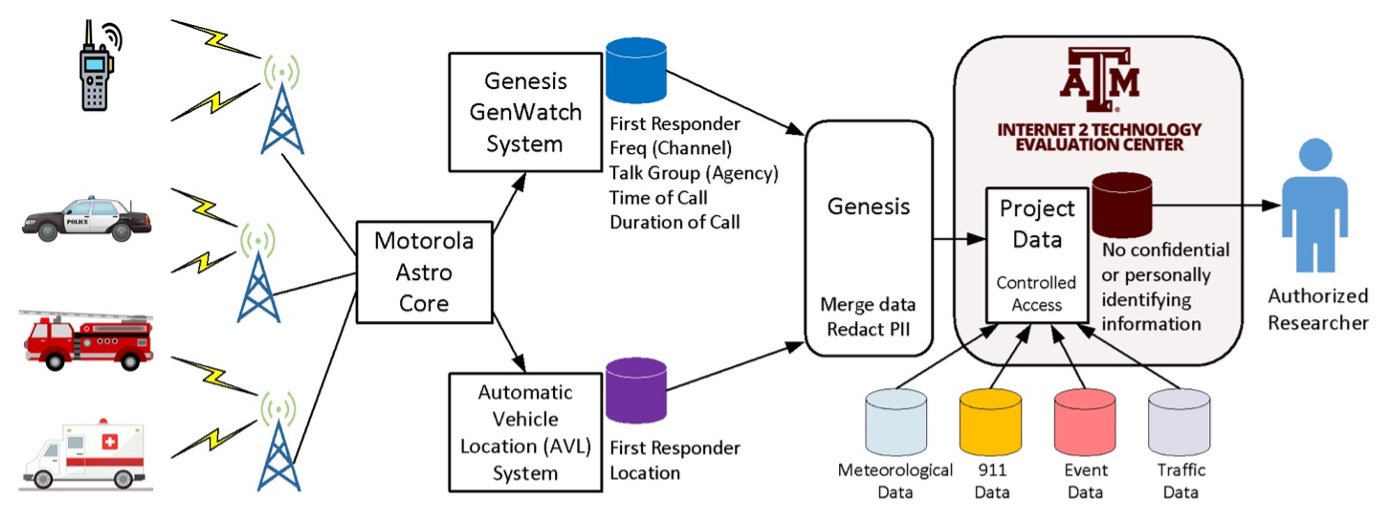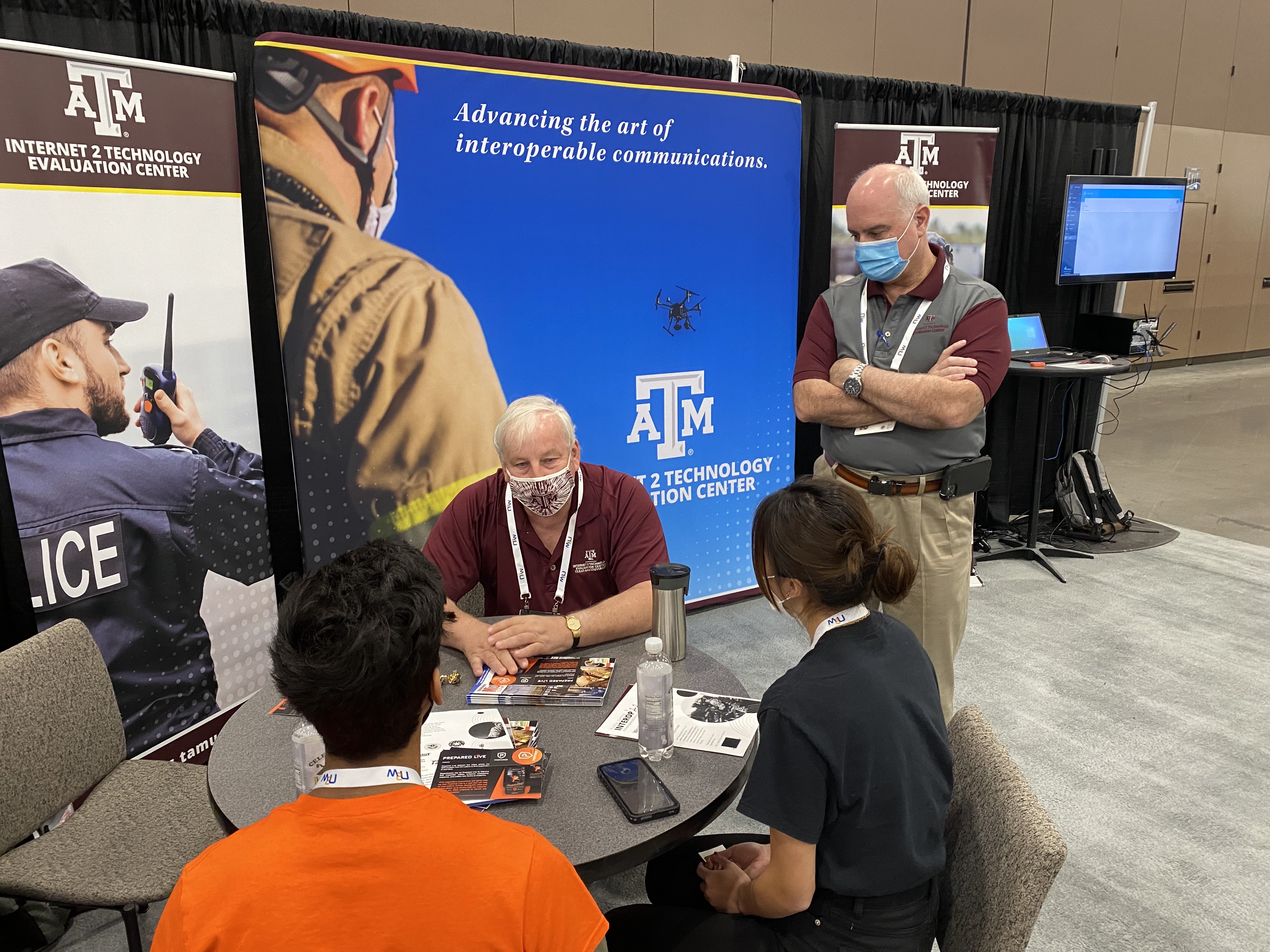In September 2021, Texas A&M University was awarded more than $900,000 for the Public Safety Innovation Accelerator Program: Public Safety Radio Data Grant.
As public safety begins to transition from Land Mobile Radio (LMR) systems to packet-based broadband systems such as LTE (Long-Term Evolution) and 5G technology, shared public safety radio datasets are becoming increasingly important. In the effort to support the transition from LMR to LTE, Texas A&M seeks to gather this data from several different public safety organizations to develop traffic models and determine overall system requirements.
Texas A&M University’s project will collect Land Mobile Radio data from a diverse set of public safety organizations (PSO) across the nation to perform research and analysis toward understanding LMR usage implications for transition to LTE. The project team will collect data from ten PSOs throughout the US as well as related geographical information such as weather and event data to facilitate rich data research and analysis and characterize LMR usage and prepare for the transition to LTE.
There are primarily two big categories of analyses that will be carried out in Texas A&M University’s project: (1) Spatial analysis on top of Geographic Information Systems (GIS) and (2) Temporal analysis focuses on hourly, daily, and monthly patterns of emergency calls and all factors that are associated with call volumes in certain periods. The project will explore and analyze the hotspot of cellular and landline emergency calls concerning critical (emergency and healthcare) facilities as well as emergency calls from residential landlines. The project will aim to discover the spatial patterns of the calls and build machine learning models to help estimate active regions where special attention is needed to develop long‐term mitigation strategies, enhancing preparedness, response, and recovery. Such spatial analysis, if done in real time, can directly help with the preparedness and response of the emergency. Furthermore, the analyzed information can be utilized to support damage assessment, rebuilding, and even public education.






